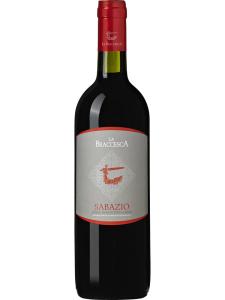Rosso di Montepulciano is a red wine-specific DOC of Tuscany, central Italy. It was created in 1989; however, it was the amendments made to the DOC rules in 1999 which really led to the Rosso di Montepulicano wine style which exists today. Regulations now allow the rosso to be made in the same area of production around the town of Montepulciano and from similar grape varieties as its better-known sibling, Vino Nobile di Montepulciano DOCG. A slightly different percentage of grapes comprises the DOC wine, but Prugnolo Gentile (the local name for Sangiovese Grosso) is still the mainstay (minimum 70%). This is combined with Canaiolo (maximum 20%) and other permitted varieties in the province of Siena, such as native Mammolo and/or internationals Merlot and Cabernet Sauvignon (maximum 20%).
This younger-established classified zone gives producers more scope to choose where they intend their fruit to end up, depending on the exposure of terrains, the climate during the growing season and any other factors required when deciding whether the fruit is suitable for DOC or DOCG standards. Thus, declassified Vino Nobile wine can go into Rosso di Montepulciano. The overall result should be more consistency and higher quality coming out of Montepulciano.
There are two slight differences between the two siblings: yields tend to be a little higher for the rosso, which is allowed 70hL per hectare compared to Vino Nobile's 56hL per hectare. The DOC wine is also released much earlier than its brother, only requiring six instead of 24 months of ageing.
Better-quality Rosso di Montepulcianos tend to come from vineyards situated around 300m (984ft) above sea level on slopes facing south-east, and planted in soils layered with sand, gravel and clay. Generally this wine, like its neighbor Rosso di Montalcino (little brother of Brunello di Montalcino), is an easier-drinking, fresher and fruitier version of Vino Nobile, though it is shorter lived. Its medium body and aromas of violets, coming from the Mammolo grape, are traits that mirror its bigger brother.



